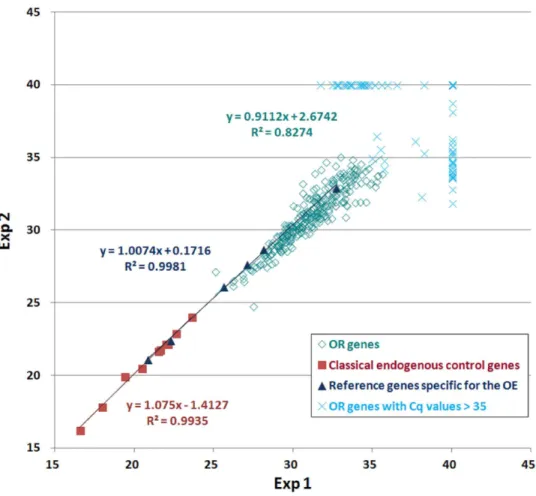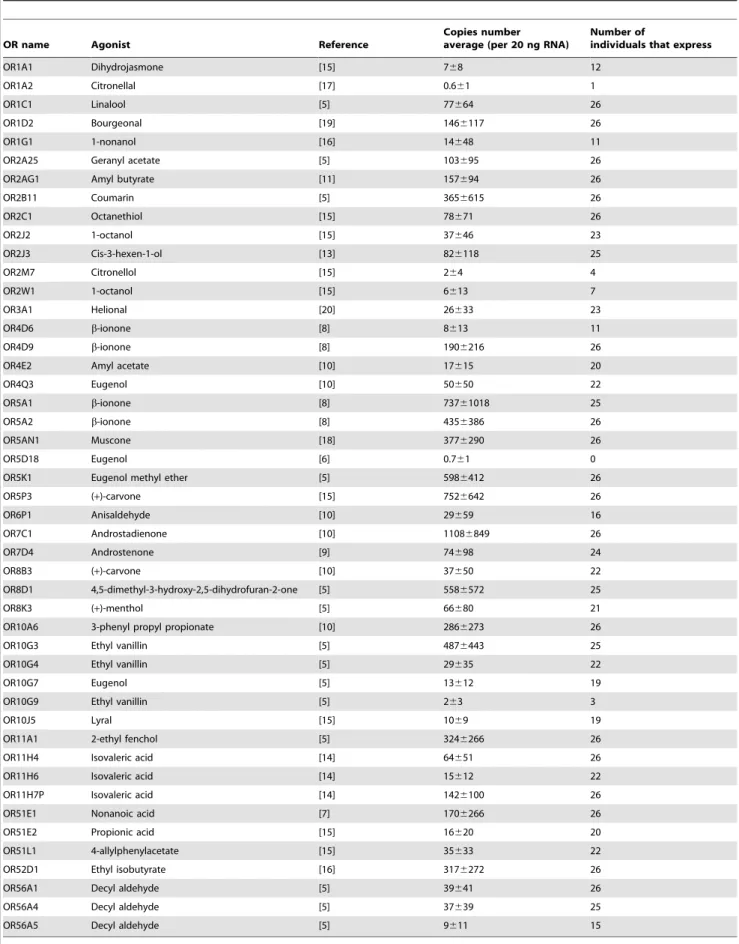Profiling of olfactory receptor gene expression in whole human olfactory mucosa.
Texto
Imagem




Documentos relacionados
Coordinate transcription of variant surface glycoprotein genes and an expression site associated gene family in Trypanosoma brucei. Cloning and transcription analysis of a variant
Sequence of speci fi c primers designed for the quantitative detection of genes involved in the synthesis of esterase and endogenous control gene 18S ribosomal RNA for
We studied the differential expression of Odorant-Binding Proteins (OBPs) gene family, which participate in initial steps of the olfactory signal transduction cascade, in two
Based on previous studies that claimed the influence of unknown elements in the control and regulation of mecA gene, the ability of bla genes to control mecA expression
This study evaluated the expression of three housekeeping genes (beta-actin, cyclophilin A, and ubiquitin C) in different areas of the central nervous system in rats (olfactory bulb,
C ; Representative in-cell western assay and summary data of the TRPC3 expression (normalized to CD14 expression used as an internal reference) in monocytes from normotensive
Differential expression of genes in the CA1 region of KA-treated rats compared to control rats: genes associated with neuronal damage, calcium-binding, gliosis and inflammation..
This analysis was limited to the sting gland comparison between nurses and foragers, and the sting gland versus digestive tract comparisons for both life history phases,